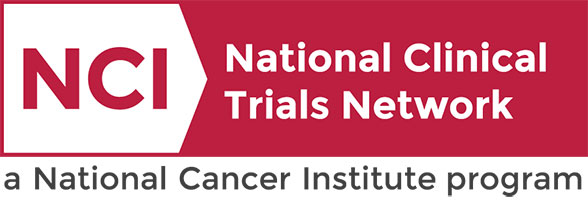Evaluating the Addition of the Immunotherapy Drug Atezolizumab to Standard Chemotherapy Treatment for Advanced or Metastatic Neuroendocrine Carcinomas That Originate Outside the Lung
Neuroendocrine
Neuroendocrine
This phase II/III trial compares the effect of immunotherapy with atezolizumab in combination with standard chemotherapy with a platinum drug (cisplatin or carboplatin) and etoposide versus standard therapy alone for the treatment of poorly differentiated extrapulmonary (originated outside the lung) neuroendocrine cancer that may have spread from where it first started to nearby tissue, lymph nodes, or distant parts of the body (advanced) or that has spread from where it first started (primary site) to other places in the body (metastatic). The other aim of this trial is to compare using atezolizumab just at the beginning of treatment versus continuing it beyond the initial treatment. Immunotherapy with monoclonal antibodies, such as atezolizumab, may help the body's immune system attack the cancer, and may interfere with the ability of tumor cells to grow and spread. Cisplatin and carboplatin are in a class of medications known as platinum-containing compounds that work by killing, stopping or slowing the growth of cancer cells. Etoposide is in a class of medications known as podophyllotoxin derivatives. It blocks a certain enzyme needed for cell division and DNA repair, and it may kill cancer cells. Giving atezolizumab in combination with a platinum drug (cisplatin or carboplatin) and etoposide may work better in treating patients with poorly differentiated extrapulmonary neuroendocrine cancer compared to standard therapy with a platinum drug (cisplatin or carboplatin) and etoposide alone.
Neuroendocrine
II/III
Ramirez, Robert
NCT05058651
SWOGGIS2012
A Study to Test Long-term Treatment With Brigimadlin in People With Solid Tumours Who Took Part in a Previous Study With This Medicine
Miscellaneous
Miscellaneous
This study is open to adults with solid tumours who received at least 4 cycles of treatment with brigimadlin in a previous study. The goal of this study is to find out how well people with solid tumours tolerate long-term treatment with brigimadlin. Brigimadlin is a so-called MDM2 inhibitor that was being developed to treat cancer.
All participants take brigimadlin as tablets once every 3 weeks at the study site. At study visits, doctors check participants' health and take note of any unwanted effects. At some study visits, doctors also check the size of the tumour and whether it has spread to other parts of the body. Participants are in the study as long as they benefit from treatment and can tolerate it.
All participants take brigimadlin as tablets once every 3 weeks at the study site. At study visits, doctors check participants' health and take note of any unwanted effects. At some study visits, doctors also check the size of the tumour and whether it has spread to other parts of the body. Participants are in the study as long as they benefit from treatment and can tolerate it.
Miscellaneous
II
Keedy, Vicki
NCT06619509
VICCSAR24625
TPIV100 and Sargramostim for the Treatment of HER2 Positive, Stage II-III Breast Cancer in Patients With Residual Disease After Chemotherapy and Surgery
This phase II trial studies how well TPIV100 and sargramostim work in treating patients with HER2 positive, stage II-III breast cancer that has residual disease after chemotherapy prior to surgery. It also studies why some HER2 positive breast cancer patients respond better to chemotherapy in combination with trastuzumab and pertuzumab. TPIV100 is a type of vaccine made from HER2 peptide that may help the body build an effective immune response to kill tumor cells that express HER2. Sargramostim increases the number of white blood cells in the body following chemotherapy for certain types of cancer and is used to alert the immune system. It is not yet known if TPIV100 and sargramostim will work better in treating patients with HER2 positive, stage II-III breast cancer.
Not Available
II
Not Available
NCT04197687
VICCBRE2241
Adding Nivolumab to Usual Treatment for People With Advanced Stomach or Esophageal Cancer, PARAMUNE Trial
This phase II/III trial compares the addition of nivolumab to the usual treatment of paclitaxel and ramucirumab to paclitaxel and ramucirumab alone in treating patients with gastric or esophageal adenocarcinoma that may have spread from where it first started to nearby tissue, lymph nodes, or distant parts of the body (advanced). A monoclonal antibody is a type of protein that can bind to certain targets in the body, such as molecules that cause the body to make an immune response (antigens). Immunotherapy with monoclonal antibodies, such as nivolumab, may help the body's immune system attack the cancer, and may interfere with the ability of tumor cells to grow and spread. Ramucirumab is a monoclonal antibody that may prevent the growth of new blood vessels that tumors need to grow. Paclitaxel is in a class of medications called antimicrotubule agents. It stops cancer cells from growing and dividing and may kill them. Adding nivolumab to ramucirumab and paclitaxel may work better to treat patients with advanced stomach or esophageal cancer.
Not Available
II/III
Agarwal, Rajiv
NCT06203600
SWOGGIS2303
A Phase 3 Study to Evaluate Petosemtamab Compared With Investigator's Choice Monotherapy in Previously Treated Head and Neck Squamous Cell Carcinoma Patients
Head/Neck
Head/Neck
This is a phase 3 open-label, randomized, controlled, multicenter study to compare petosemtamab vs investigator's choice monotherapy in HNSCC patients for the second- and third-line treatment of incurable metastatic/recurrent disease.
Head/Neck
III
Choe, Jennifer
NCT06496178
VICC-DTHAN23576
Dinutuximab With Chemotherapy, Surgery and Stem Cell Transplantation for the Treatment of Children With Newly Diagnosed High Risk Neuroblastoma
This phase III trial tests how well the addition of dinutuximab to Induction chemotherapy along with standard of care surgical resection of the primary tumor, radiation, stem cell transplantation, and immunotherapy works for treating children with newly diagnosed high-risk neuroblastoma. Dinutuximab is a monoclonal antibody that binds to a molecule called GD2, which is found on the surface of neuroblastoma cells, but is not present on many healthy or normal cells in the body. When dinutuximab binds to the neuroblastoma cells, it helps signal the immune system to kill the tumor cells. This helps the cells of the immune system kill the cancer cells, this is a type of immunotherapy. When chemotherapy and immunotherapy are given together, during the same treatment cycle, it is called chemoimmunotherapy. This clinical trial randomly assigns patients to receive either standard chemotherapy and surgery or chemoimmunotherapy (chemotherapy plus dinutuximab) and surgery during Induction therapy. Chemotherapy drugs administered during Induction include, cyclophosphamide, topotecan, cisplatin, etoposide, vincristine, and doxorubicin. These drugs work in different ways to stop the growth of cancer cells, either by killing the cells, by stopping them from dividing or by stopping them from spreading. Upon completion of 5 cycles of Induction therapy, a disease evaluation is completed to determine how well the treatment worked. If the tumor responds to therapy, patients receive a tandem transplantation with stem cell rescue. If the tumor has little improvement or worsens, patients receive chemoimmunotherapy on Extended Induction. During Extended Induction, dinutuximab is given with irinotecan, temozolomide. Patients with a good response to therapy move on to Consolidation therapy, when very high doses of chemotherapy are given at two separate points to kill any remaining cancer cells. Following, transplant, radiation therapy is given to the site where the cancer originated (primary site) and to any other areas that are still active at the end of Induction. The final stage of therapy is Post-Consolidation. During Post-Consolidation, dinutuximab is given with isotretinoin, with the goal of maintaining the response achieved with the previous therapy. Adding dinutuximab to Induction chemotherapy along with standard of care surgical resection of the primary tumor, radiation, stem cell transplantation, and immunotherapy may be better at treating children with newly diagnosed high-risk neuroblastoma.
Not Available
III
Benedetti, Daniel
NCT06172296
VICC-NTPED24104
A Clinical Trial of Four Medicines (Elranatamab Plus Carfilzomib and Dexamethasone or Maplirpacept) in People With Relapsed Refractory Multiple Myeloma
The main purpose of the study is to evaluate the safety and tolerability of the combination of elranatamab and carfilzomib and dexamethasone or elranatamab and maplirpacept.
There are 2 parts to this study. Part 1 will evaluate the safety and tolerability of elranatamab when given in combination with carfilzomib plus dexamethasone. Part 2 has 2 arms. The first will evaluate the safety and tolerability of elranatamab when given in combination with maplirpacept. The second will identify the optimal dose(s) of elranatamab plus maplirpacept.
All study medicines are given over 4-week cycles. Everyone taking part in this study will receive elranatamab as a shot under the skin. Participants in Part 1 will also receive weekly carfilzomib as an IV infusion (given directly into a vein) and dexamethasone either by mouth (as a pill) or by IV infusion. Participants in Part 2 will receive elranatamab in combination with maplirpacept as an IV infusion (given directly into a vein)
The investigators will examine the experiences of people receiving the study medicines. This will help determine if the study medicines are safe and can be used for multiple myeloma treatment. Participants will take part in this study for about 2 years after the first dose.
There are 2 parts to this study. Part 1 will evaluate the safety and tolerability of elranatamab when given in combination with carfilzomib plus dexamethasone. Part 2 has 2 arms. The first will evaluate the safety and tolerability of elranatamab when given in combination with maplirpacept. The second will identify the optimal dose(s) of elranatamab plus maplirpacept.
All study medicines are given over 4-week cycles. Everyone taking part in this study will receive elranatamab as a shot under the skin. Participants in Part 1 will also receive weekly carfilzomib as an IV infusion (given directly into a vein) and dexamethasone either by mouth (as a pill) or by IV infusion. Participants in Part 2 will receive elranatamab in combination with maplirpacept as an IV infusion (given directly into a vein)
The investigators will examine the experiences of people receiving the study medicines. This will help determine if the study medicines are safe and can be used for multiple myeloma treatment. Participants will take part in this study for about 2 years after the first dose.
Not Available
I
Baljevic, Muhamed
NCT05675449
VICC-DTPCL23011P
Surgery With or Without Neoadjuvant Chemotherapy in High Risk RetroPeritoneal Sarcoma
Sarcoma
Sarcoma
This is a multicenter, randomized, open label phase lll trial to assess whether preoperative chemotherapy, as an adjunct to curative-intent surgery, improves the prognosis of high risk DDLPS (dedifferentiated Liposarcoma) and LMS (Leiomyosarcoma) patients as measured by disease free survival.
After confirmation of eligibility criteria, patients will be randomized to either the standard arm or experimental arm.
After confirmation of eligibility criteria, patients will be randomized to either the standard arm or experimental arm.
Sarcoma
III
Davis, Elizabeth
NCT04031677
ECOGSAREA7211
Comparing Sentinel Lymph Node (SLN) Biopsy With Standard Neck Dissection for Patients With Early-Stage Oral Cavity Cancer
Head/Neck
Head/Neck
This phase II/III trial studies how well sentinel lymph node biopsy works and compares sentinel lymph node biopsy surgery to standard neck dissection as part of the treatment for early-stage oral cavity cancer. Sentinel lymph node biopsy surgery is a procedure that removes a smaller number of lymph nodes from your neck because it uses an imaging agent to see which lymph nodes are most likely to have cancer. Standard neck dissection, such as elective neck dissection, removes many of the lymph nodes in your neck. Using sentinel lymph node biopsy surgery may work better in treating patients with early-stage oral cavity cancer compared to standard elective neck dissection.
Head/Neck
II/III
Topf, Michael
NCT04333537
NRGHN006
Sequential Therapy in Multiple Myeloma Guided by MRD Assessments
Multiple Myeloma
Multiple Myeloma
This research study will determine the proportion of patients with lowest minimal residual disease (MRD) response obtainable after receiving 6 cycles of study treatment. Minimal residual disease is multiple myeloma cells below the level of 1 cancer cell out of 100,000 in the bone marrow.
For patients who become MRD "negative" (i.e. less than 1 cancer cell out of 100,000) at the end of 6 cycles of therapy, this study will study if that good response can be maintained with 3 additional cycles of treatment instead of use of autologous hematopoietic cell transplantation (AHCT).
For patients who are MRD "positive" at the end of 6 cycles of therapy, this study will answer whether more patients can become and remain MRD "negative" with AHCT plus teclistamab in combination with daratumumab when compared with patients who undergo AHCT followed by lenalidomide (an established anti-myeloma drug) plus daratumumab.
For patients who become MRD "negative" (i.e. less than 1 cancer cell out of 100,000) at the end of 6 cycles of therapy, this study will study if that good response can be maintained with 3 additional cycles of treatment instead of use of autologous hematopoietic cell transplantation (AHCT).
For patients who are MRD "positive" at the end of 6 cycles of therapy, this study will answer whether more patients can become and remain MRD "negative" with AHCT plus teclistamab in combination with daratumumab when compared with patients who undergo AHCT followed by lenalidomide (an established anti-myeloma drug) plus daratumumab.
Multiple Myeloma
II
Baljevic, Muhamed
NCT05231629
VICC-ITPCL23014


